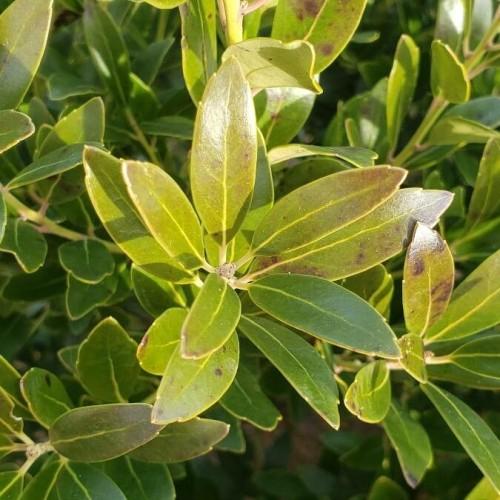
nordic inkberry
Ilex glabra 'Chamzin' NORDIC
Cycle:
Perennial
Watering:
Frequent
Hardiness Zone:
3 - 9
Flowers:
Flowers
Sun:
Full sun,part shade
Fruits:
Fruits Ready In Fall
Leaf:
Yes
Growth Rate:
Low
Maintenance:
Low
Drought Tolerant:
Yes
Salt Tolerant:
Yes
Thorny:
Yes
Care Level:
Medium
watering
Nordic inkberry is drought tolerant and requires infrequent watering. During its active growing season, these plants should be watered thoroughly whenever the top 2 inches of soil begin to feel dry. During periods of intense heat, you should adjust your watering schedule and water more frequently. To ensure the plants can retain adequate moisture, use mulch around plants to reduce water loss through evaporation. In the winter, watering is usually not necessary unless the soil is dry. In these cases, water deeply and thoroughly.
sunlight
Nordic Inkberry (Ilex glabra 'Chamzin' NORDIC) should receive full or partial sun to thrive. It prefers partial sun or light shade in the morning to protect from the intense afternoon heat. It should receive 4 to 6 hours of direct sun per day with some partial shade during the hottest part of the day to protect its foliage. It should be placed in a location that ensures there is enough light to ensure the plant’s health. During the summer, it should receive around 10 hours of light each day, and during winter it should get about 8 hours of light per day.
pruning
Nordic inkberry (Ilex glabra 'Chamzin' NORDIC) is a tough and versatile evergreen shrub. Pruning is relatively easy and minimal for this plant. Since the main goal of pruning this shrub is to maintain its natural shape and size, it only requires periodic light pruning to remove dead, diseased, or damaged stems throughout the growing season. In general, it is best to prune Nordic inkberry (Ilex glabra 'Chamzin' NORDIC) in late winter or early spring before new growth appears. This is when most of the dead wood and branches can be seen. Pruning should aim to open the shrub up to allow air circulation and to encourage more blooming. When pruning, cuts should be made just above a leaf set, and no more than 1-third of a branch should be removed at a time. Care should be taken not to damage the stems. Finally, some pruning may be required in summer and autumn to maintain the desired size and shape. This can be done by selectively trimming back longer shoots to keep the shrub compact and attractive.
